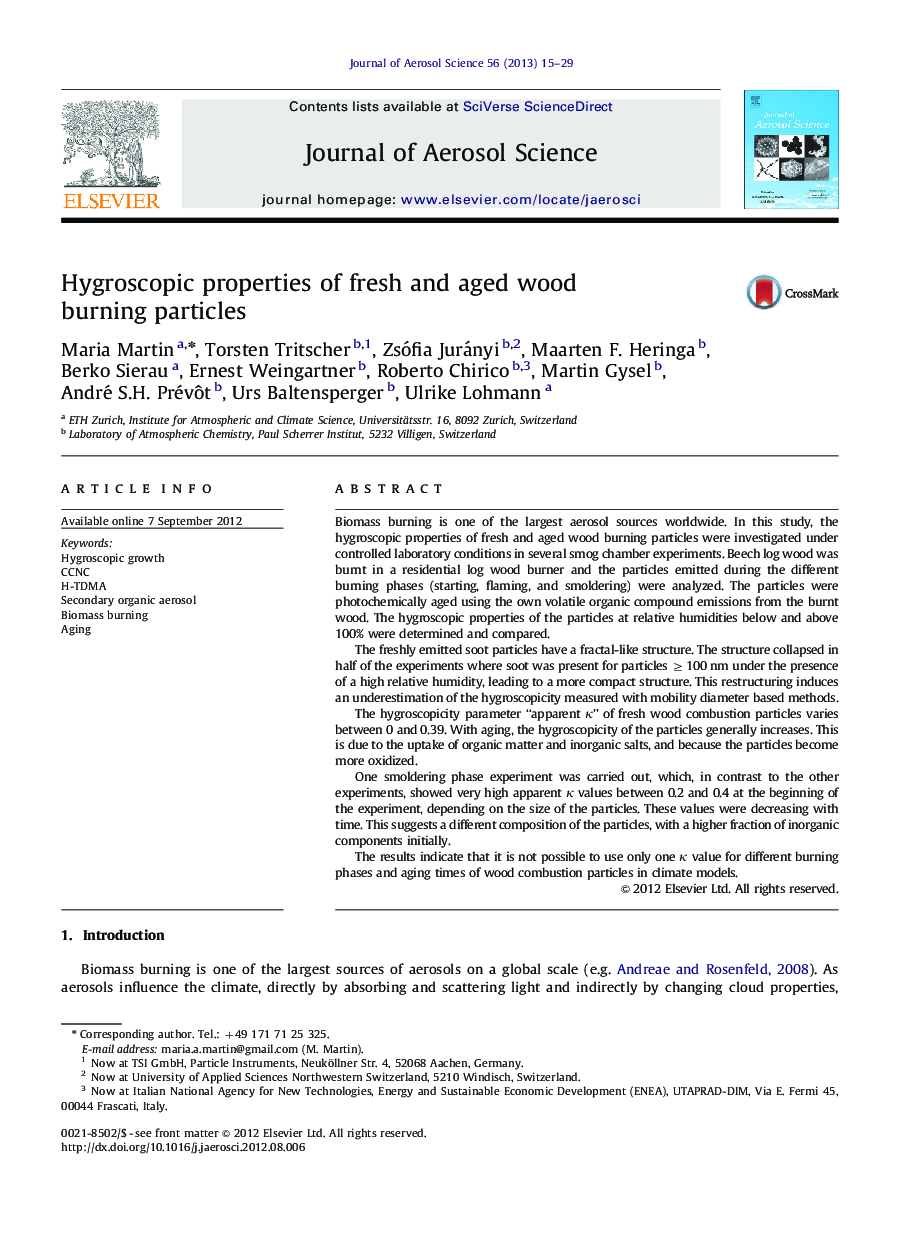| Article ID | Journal | Published Year | Pages | File Type |
|---|---|---|---|---|
| 4452584 | Journal of Aerosol Science | 2013 | 15 Pages |
Biomass burning is one of the largest aerosol sources worldwide. In this study, the hygroscopic properties of fresh and aged wood burning particles were investigated under controlled laboratory conditions in several smog chamber experiments. Beech log wood was burnt in a residential log wood burner and the particles emitted during the different burning phases (starting, flaming, and smoldering) were analyzed. The particles were photochemically aged using the own volatile organic compound emissions from the burnt wood. The hygroscopic properties of the particles at relative humidities below and above 100% were determined and compared.The freshly emitted soot particles have a fractal-like structure. The structure collapsed in half of the experiments where soot was present for particles ≥100nm under the presence of a high relative humidity, leading to a more compact structure. This restructuring induces an underestimation of the hygroscopicity measured with mobility diameter based methods.The hygroscopicity parameter “apparent κκ” of fresh wood combustion particles varies between 0 and 0.39. With aging, the hygroscopicity of the particles generally increases. This is due to the uptake of organic matter and inorganic salts, and because the particles become more oxidized.One smoldering phase experiment was carried out, which, in contrast to the other experiments, showed very high apparent κκ values between 0.2 and 0.4 at the beginning of the experiment, depending on the size of the particles. These values were decreasing with time. This suggests a different composition of the particles, with a higher fraction of inorganic components initially.The results indicate that it is not possible to use only one κκ value for different burning phases and aging times of wood combustion particles in climate models.
► Fresh and aged wood burning particles from a log wood burner were investigated in a smog chamber. ► Their hygroscopic properties were determined in the sub- and supersaturated regime. ► Different burning phases (flaming, starting, and smoldering) and particle sizes were investigated. ► The hygroscopicity of the organic fraction of the particles was estimated for one experiment.
